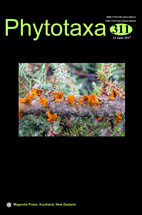Abstract
The Diablas wetlands are found on the south coast of Isabela Island on the Galapagos archipelago, consisting of one main lagoon and a series of smaller pools and lagoons. Recent studies have revealed a freshwater-brackish diatom assemblage in the Diablas wetlands, containing a relatively large number of novel taxa. This study gives formal description of seven new diatom taxa found in one sample from the Diablas wetlands. The sampling site contains floating moss at the mouth of a freshwater-brackish stream connecting the lagoon to the sea, with a salinity of around ca. 7 psu. The diatom assemblage in this sample, represented by genera observed in increased water conductivity (salinity), e.g. Luticola, also includes those which occur mostly in lower pH “soft waters”, e.g. Eunotia and Frustulia, and some marine taxa found in lower relative abundances (as Achnanthes parvula, Opephora cf. pacifica and Actinoptychus sp.). The new species are: Luticola galapagoensis, Luticola darwinii, Frustulia galapagosaxonica, Eunotia pacificomonodon, Eunotia isabelensis, Eunotia feremiserabilis and Pinnularia valdecontroversa. Some of the new taxa are morphologically similar to well-known Holarctic taxa but differ in terms of size and other metric data. The work continues to indicate the Diablas wetlands contain a diverse network of diatom habitats and associated assemblages of novel diatom species.

